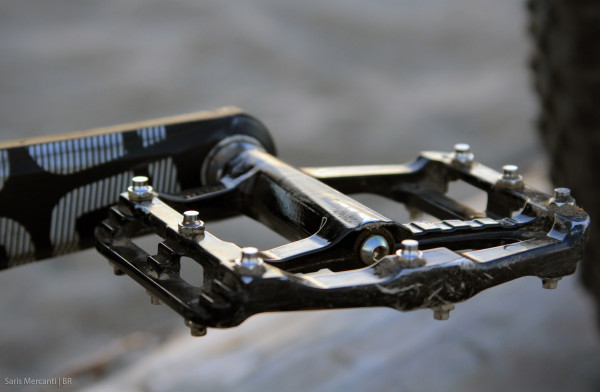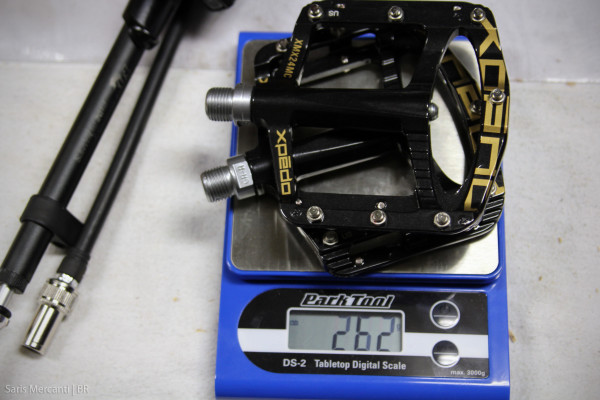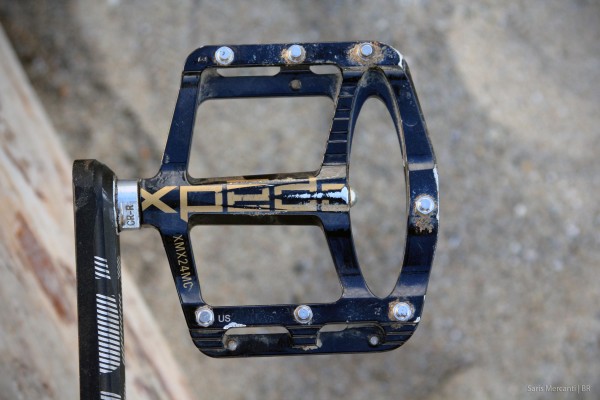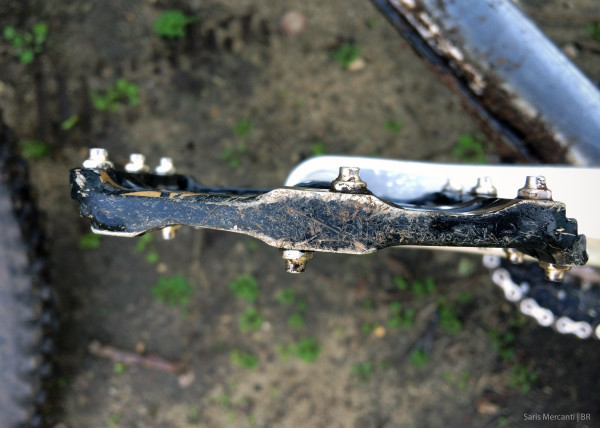Early last year Xpedo quietly released a new pedal that managed to offer a ton of value for literally hundreds less than what many boutique companies were charging. Their Spry hit all the right marks by weighing next to nothing, offering a good size platform, and being offered at a price that’s within anyone’s reach.
We’ve had our heart broken before by other extremely thin and lightweight pedals, whose good looks were fettered by poor reliability. So did the Xpedo Spry pedals delight or disappoint?
Weight
Claimed weight for the pair of pedals is 260 grams. We’ll chalk those extra two grams on our scale to uh, atmospheric aberrations.
Tech
While many riders may have never heard of the company before, Xpedo has been making pedals for over thirty years. We have several sets of their flat pedals that predate the 15mm axle that are still spinning strong. The key to their reliability is the use of two cartridge bearings.
The magnesium cast body is 11mm thick and the platform area is 106x100x11 mm. Thats not quite as large as some premium offerings from Twenty Six or E13, but is slightly larger than your average platform (particularly at this price point.)
Each face has 7 top loading pins, and every set of pedals ship with spare spins, and a small wrench for easy installation.
ON THE TRAIL
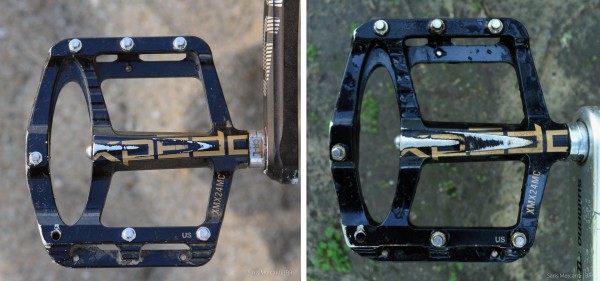
Our Xpedo pedals have suffered through miles upon miles of dusty redwood single track, a half dozen Downieville shuttles, and a week of being worked by rocks at Bootleg Canyon. At slow speeds, it’s quite obvious they lack some of the bite of other competitors. My feet constantly required micro adjustments to stay in place during relatively flat climbs, but that lack of bite all but disappeared when attacking terrain aggressively.
At speed, even through the rowdiest and rockiest of Downieville singletrack, my feet generally stayed firmly in place when wearing either Teva Links or Five.Ten sneaks. We know a lot of companies who design flats are making the move towards pedals that remain grippy, but still allow the rider to adjust their feet when rallying through hairy descents. With this design ethos in mind, Xpedo has done fairly well, but we’d like to see these pedal offered with two sets of pins. The stock set and a more aggressive pair, for those who prefer a tackier platform or live in wetter climates.
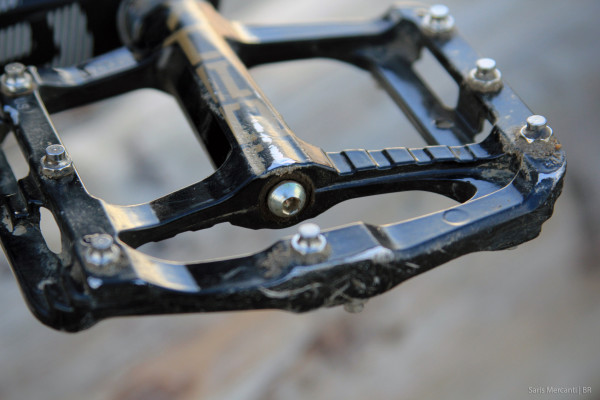
Over the course of summer, fall, and now (a pitifully dry) winter here in California, we have performed next to no maintenance. The platforms did develop a small bit of play along the axle, but that slop was mitigated by tightening the hex head found on the outside of the axle. Due to design constraints, it’s not a job you can due trailside, unless you carry a ball ended hex key. So keep an eye out for it, because unless the play gets really bad, you might not notice. We only caught it early because we’re regularly swapping pedals out between different review bikes.
The Xpedo Spry pedal is a great platform pedal that doesn’t cut any corners to achieve it’s unbelievably low weight. Over the past few months we’ve been testing these pedals, we’ve found ourselves constantly reaching for them because the shallow platform has helped us minimize pedal strikes on the new crop of 27.5″ bikes, that have very low bottom brackets. If you’re in the market for platform pedals, this is one option you can’t afford to overlook. The $79 pricetag and 260 gram weight speaks for itself, and if you do find yourself looking for more grip, the company also offers several different aftermarket pin options for under $20. You can get yours in either black, gold, red, or white.
